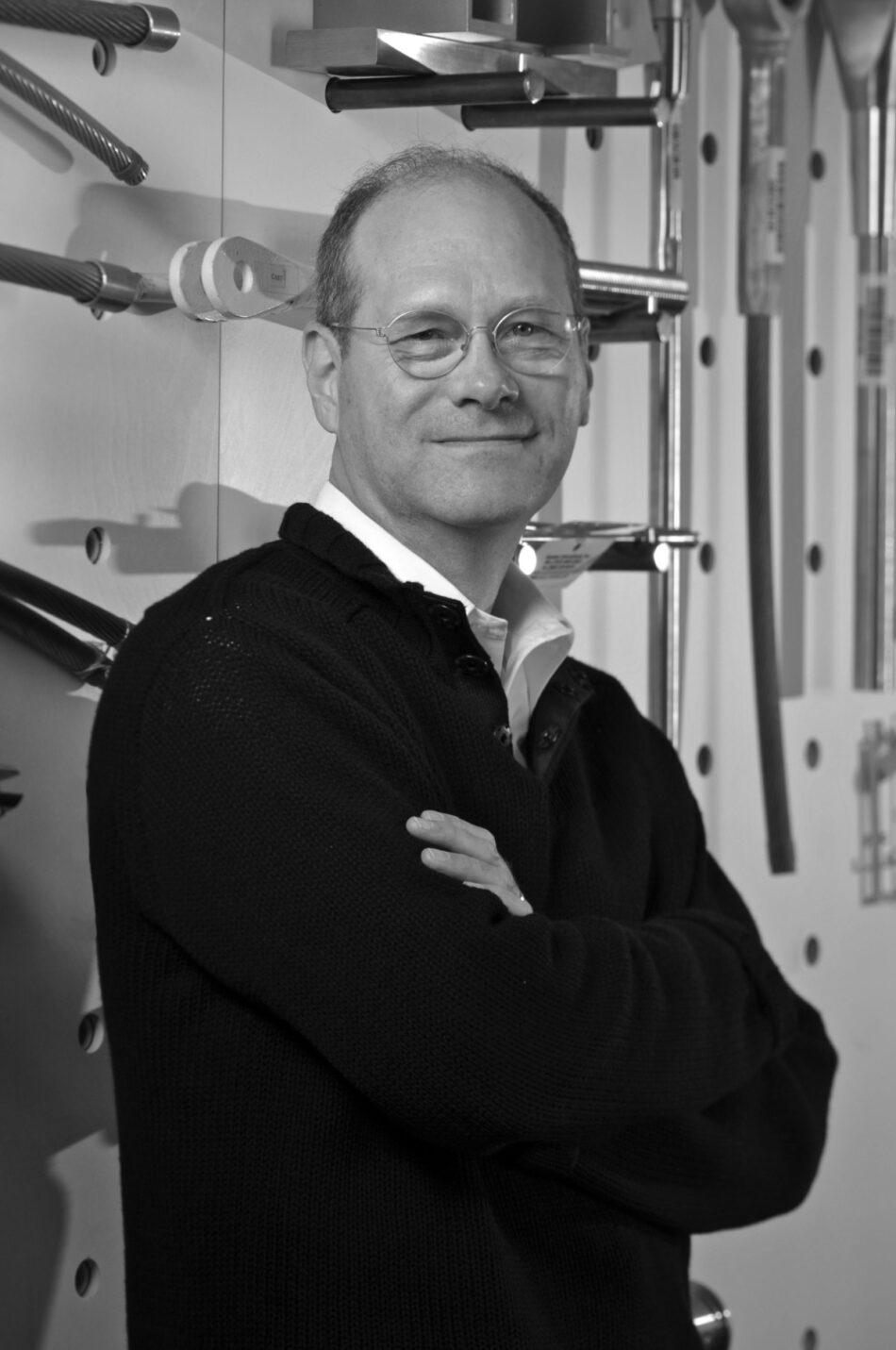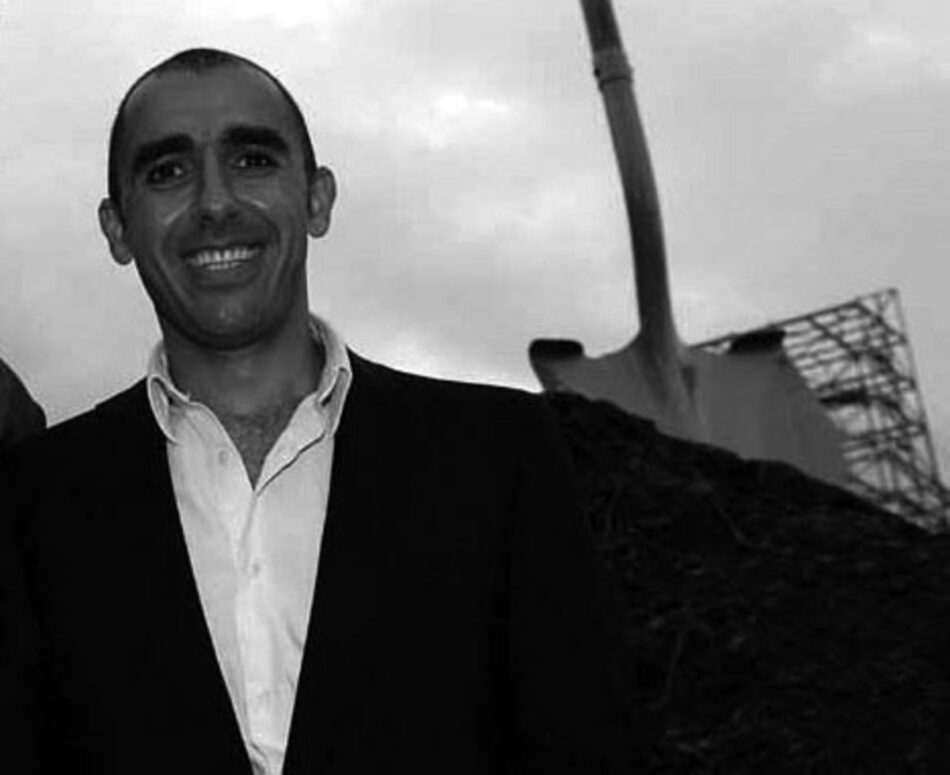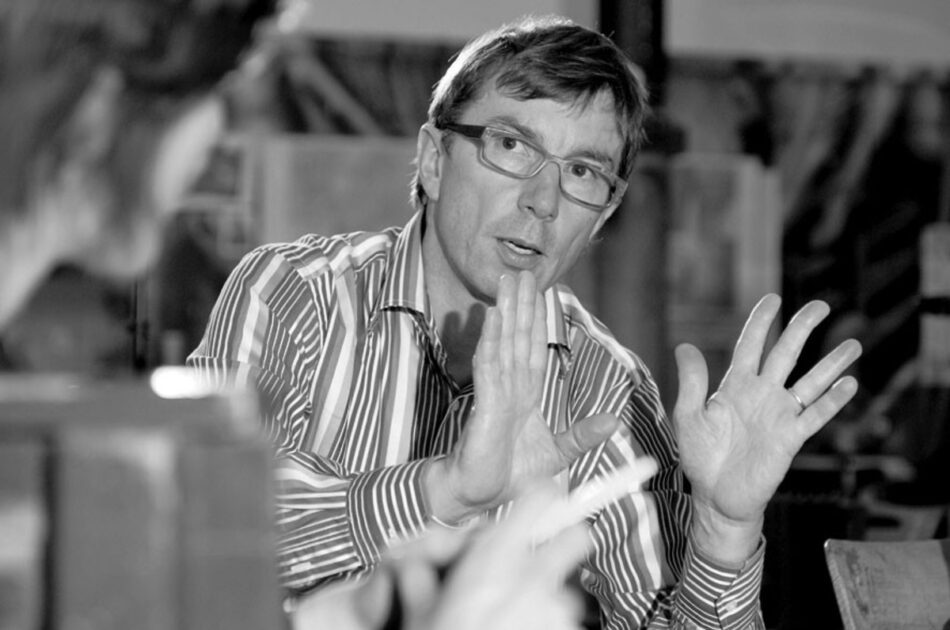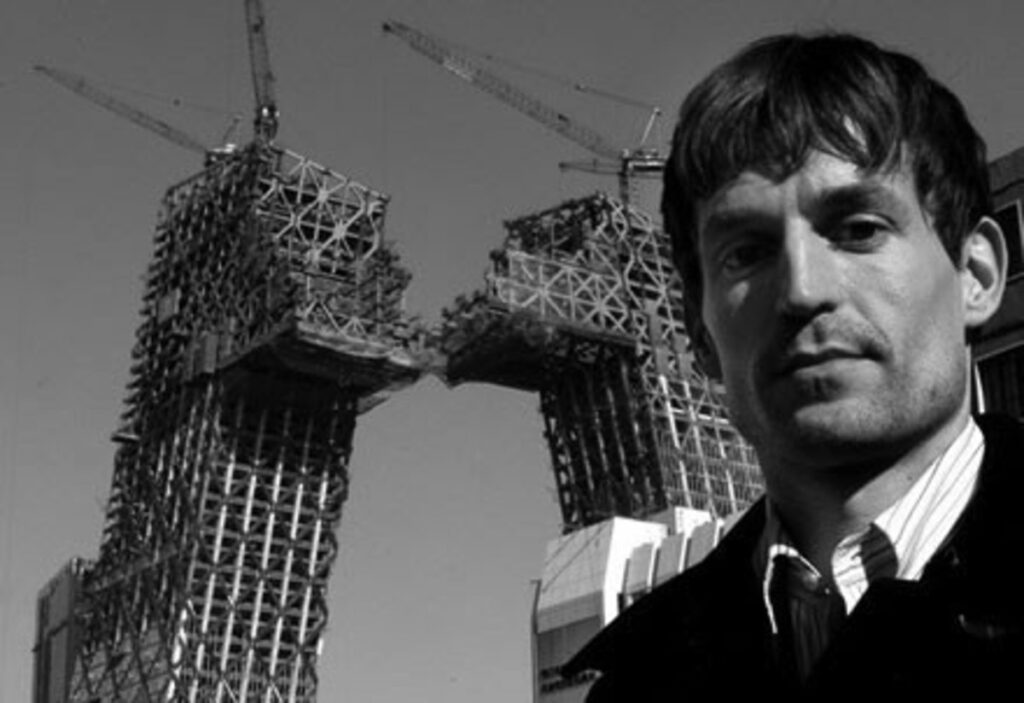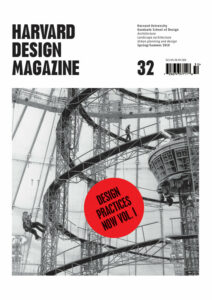On Credit: Many Collaborators, One Name in Lights
One summer afternoon six years ago, I got a phone call from Ole Scheeren, then a young partner in the Office for Metropolitan Architecture, the firm founded in 1975, in London, by Rem Koolhaas, Elia and Zoe Zenghelis, and Madelon Vriesendorp. A story I’d written on OMA’s latest American project, a smallish, logo-free Prada store in Beverly Hills, had appeared in that morning’s New York Times. I’ll be honest: A conversation with an architect whose work I’ve just covered is not something I look forward to. If the architect is generally pleased with what I’ve written, we typically exchange banal pleasantries. (If he’s really pleased, I start to feel a little guilty, wondering if what I’ve provided is not criticism but marketing.) If the architect is unhappy, well, you can imagine how that goes.
I
The same is true for written communication, for the most part—not just from the architects who e-mail with gratitude or complaints but from those who, charmingly enough, continue to send letters by post. Thom Mayne, who runs the Santa Monica firm Morphosis, has a habit of annotating my reviews of his work in green pen and then sending the marked-up copy to me in the mail, usually to my home address. There are always lots of paired exclamation points in the margins, plus scrawled comments that I can tell are aggrieved but whose particulars I usually have a hard time making out. If Mayne’s handwriting, which is as knotted and tangled as some of his facades, were more legible, I might find these letters upsetting.
So needless to say, I didn’t begin the phone call with Scheeren with much enthusiasm. But it wound up being among the most productive conversations about architecture—and the architectural press—I’ve ever had. Scheeren was compelled to call for reasons that at first seemed predictable enough: He was upset that his name did not appear in the Times article until the fourteenth paragraph of my story. By that point, I had already mentioned Koolhaas’s name seven times and quoted him twice. I could see Scheeren’s point, of course: Not only was he (along with Koolhaas) one of two partners in charge on the Prada store, he had been the one to tour me around the building when I visited Beverly Hills. On top of that, he was—despite the fact that he was at that point just thirty-three years old—already a full partner at OMA, not an ambitious underling angling for a shot at newspaper glory.
Scheeren began by asking me a number of detailed questions about how the writing and editing process works at a place like the New York Times. I explained in turn how my original version of the piece had him mentioned sooner—nearer the top—and how my editor had pushed his quotes down and moved Koolhaas’s up. Any editor working on a story for a mainstream publication that happens to mention an architect readers may actually have heard of, I told him, can be expected to sharpen the focus of the story on that figure, rather than dull it in the name of fairness or to acknowledge the collaborative nature of architectural practice.
I tried a political analogy: If a member of the president’s cabinet, or an aide, crafts a statement or policy change on behalf of the administration, the media know only one way to report such news. They give full credit for the decision to the president. It is assumed the reader knows that the words “the president” refer not just to the man himself but to a diverse team of advisors, strategists, and speechwriters. The same is true in architectural journalism. “Rem Koolhaas” is—or should be—understood as a kind of shorthand. And it’s not just editors who see it that way, I added. Writers do too. We know that any story about Rem Koolhaas has a certain appeal that one about AC Martin Partners—or Ole Scheeren—does not.
I’m not sure Scheeren—who has since broken with Koolhaas, announcing in early 2010 that he would be leaving the firm to start his own Asia-based office—bought that explanation entirely, but he listened patiently before gamely explaining how similar dilemmas and contradictions unfold inside OMA. He focused on the terribly fraught ambivalence that Koolhaas maintains with the notion of collaboration: Here was an architect who came of age in the late 1960s, who had been deeply influenced by the collective political movements of that decade in Europe, and who had gone out of his way, when founding the firm, to give it an intentionally communal, even blandly bureaucratic name, as if to suggest that these daring building designs were coming from some anonymous group of midlevel apparatchiks. At the same time, Koolhaas was undoubtedly among the brightest stars in architecture’s constellation, with a blazing self-regard to match.
If I remember correctly, Scheeren confided that he holds some sympathy for Rem’s contradictory attitude on the subject of who gets credit for the firm’s work—and when, and how. “He wants to share the spotlight—he really does,” Scheeren said near the end of our phone call. “But sometimes it’s like he just can’t bring himself to do it.”
I would think of that comment two years later when I found myself, as the relatively new architecture critic for the Los Angeles Times, on a tour of the OMA’s striking new Casa da Música concert hall in Porto, Portugal, with Koolhaas and another of his young partners, Ellen van Loon. As the tour began, Koolhaas made an evident effort to defer to van Loon, who has been OMA’s sole female partner since 2002. He stood back while she described the building’s chiseled concrete shell. When another critic in our group ventured a question about acoustics, Koolhaas watched patiently as van Loon answered it in detail.
As our tour continued, we reached an escalator that wasn’t working. Koolhaas asked van Loon why it was broken and whether she could summon somebody to fix it. When after a minute or two nobody had appeared, Koolhaas made it clear to van Loon that it was her job to get the problem solved. She left in search of the building supervisor. She rejoined the tour a few minutes later, but by that point Koolhaas had taken over. We heard virtually nothing from van Loon the rest of the way.
II
Credit, in architecture, is a pendulum, and it is always swinging either away from or toward the idea that great buildings are produced by individual geniuses working in relative isolation. For much of the last decade, of course, that pendulum seemed to redouble its speed and practically race toward the genius pole, particularly once public and media attention began to turn the leading talents of the profession into that species of global celebrity known as the starchitect. With the benefit of hindsight, it seems clear that the height of celebrity worship—or at least a visible peak—was reached during Sydney Pollack’s 2006 documentary Sketches of Frank Gehry. While visually rich, the movie veered toward parody as it showed Gehry at work in his studio, crumpling up sheets of construction paper, attaching them just so to the model of a new cancer center or concert hall, then standing back, hands on hips, to assess the result. Here was the essence of architecture, the film seemed to argue: One creator, his model, his legion of assistants, and $10 worth of materials from the art-supply store. Plus inspiration, hovering in the air around the Great Man, waiting to lend a hand.
It was another scene in the same documentary, however, that more directly suggested why coverage of architecture is so often focused on the Lone Genius. It came near the end, when Charles Jencks showed up on screen to tell a hoary and probably apocryphal story about how Gehry, shaving one day in an upstairs bathroom of his newly and infamously remade bungalow in Venice, found the room rather too dark and responded by knocking a hole in the ceiling, with whatever blunt instrument was lying around, to bring in the abundant Santa Monica light. I have always found that scene a perfect representation of a certain infantilizing perspective on California culture. But as I think about it, it also encapsulates why teasing out the proper credit for a great building can be such a tedious process. Architecture in the fullest sense of the term is not just collaborative but messy and terribly slow. Jencks was casting Gehry, by contrast, as an action architect: a Jackson Pollock with Sheetrock and chain link, a creative artist who is self-reliant in the most triumphant and Western of ways. Need more light in the bathroom? Punch a hole in the ceiling.
In the last two or three years, however, we have seen the pendulum begin to swing back rather sharply from those ideas. It was not just a backlash against the notion of celebrity architecture that forced the change: It was also the emergence, especially noticeable among young architects, of an interest in what has become known as design activism, a catchall term broad enough to include sustainable architecture, low-income housing, and disaster-relief efforts. Many designers in their twenties and thirties have been working to apply to architecture the open-source model of software development, in which a program’s code is exposed on the Internet so that new users can adopt or tweak it for their own purposes. In its basic assumption of anonymity—buildings designed by everybody, or nobody—the open-source model suggests a strong turn away from the idea of the iconic project by a world-famous architect.
Still, the broader question of how clients, the press, and architecture firms themselves ought to handle the question of assigning credit for architectural creativity remains woefully underexplored, at least in ways that go beyond the usual either-or notion I’ve just laid out. And let’s be frank: The way architecture is described in the mainstream press barely makes room for credit of any kind, let alone a thorough depiction of the complex way buildings move from design through construction. When the Burj Khalifa—née Burj Dubai—debuted as the tallest building in the world earlier this year, I found myself doing a round of media interviews: on National Public Radio, Canadian Broadcasting, and even the English language version of Al Jazeera. Not once did an interviewer ask me who had designed the tower, or include that piece of information in the taped introductions that were played before bringing me on the air. In the early stages of each interview, I made a point of slipping in the name of Adrian Smith, who led the design team for the Burj Khalifa while a partner in the Chicago office of Skidmore, Owings & Merrill, and who has since gone out on his own. Sometimes I added a reference to Skidmore’s Bill Baker, the tower’s chief engineer. And almost every time—including on NPR—those names were edited out.
III
The word “credit” is derived from the Latin creditum, meaning loan (which itself comes from the verb credo, to believe or have faith in). When we in the press award an architect credit for a building, we are extending her a loan of sorts. We are giving her leverage. We are allowing her to take the part of a finished building for which she is directly responsible—the creative down payment, as it were—and stretching to cover the entire project, so that we begin to refer in print to a building designed by a team of thirty-five or forty architects and built by hundreds or thousands of people as if it were a short story typed out on an Underwood by a single set of fingers in a room measuring eight by ten feet.
The problems with that approach to credit are clear. There is all sorts of evidence to support the idea that architecture is the kind of thing one person cannot do alone. Even singular talents in architecture often rely on a trusted collaborator whose name may not be known by the public, and who is able to translate the desires of his or her boss to the rest of the firm, a client, or a contractor. (Craig Webb plays this role for Gehry, for instance; Mark Schendel plays it for his wife, Jeanne Gang.) As Tony Kushner put it in the afterword to his play Angels in America, “Marx was right: The smallest divisible human unit is two people, not one; one is a fiction.” This relationship—between a firm’s public face and a talented in-house collaborator—is not unlike the one between a novelist and a very good editor. It’s also possible, of course, for a client to play a vital collaborative role. I’ve long been surprised that there is no authoritative book detailing the most fascinating architect-client pairs in design history. Such a book could include Louis Kahn and Jonas Salk; Robert Morris and Pierre L’Enfant; and James Polshek and Bill Clinton.
Still, my experience as a critic continues to remind me that we lose something by rejecting the genius-architect theory altogether. When brilliant figures in the field retire, or die an early death, or split with a firm in a nasty professional divorce, the results are usually predictable: The spark that animates truly great buildings goes with them. I know the firms that Charles Moore helped found continue to produce solid work, but I have yet to feel inspired, or provoked into laughter, by a building by Centerbrook Architects, Moore Ruble Yudell, or another of those offices Moore left behind. For all their many faults, the buildings that Moore himself had a hand in designing simply seem more vital. And I think any architecture critic would tell you that what we long to discover when we head out to see a new building is precisely that vitality: not competence or a clever way to solve a programmatic dilemma, or even signs that a talented group of architects has been working hand in hand, but a force that practically knocks the wind out of you when you walk through the door. And more often than not that force is the product of a single architect’s talent, whether he is working with a staff of two or two hundred, and whether he sets up his office as a collegial place where collaboration is encouraged or rules it rigidly from the top down.
There are exceptions to the rule that architectural offspring never match the originality of their mentors. One is Kevin Roche, whose designs with John Dinkeloo for the Oakland Museum (topped by a brilliant landscape design by Dan Kiley) and the Ford Foundation headquarters in Manhattan show quite clearly an architectural intelligence distinct from that of Roche’s former boss, Eero Saarinen. There are also buildings that seem tailor-made to test and tease out our feelings on the subject of credit. A recent example is a teak weekend house on the beach in Malibu, a house Richard Meier and his Los Angeles–based partner, Michael Palladino, designed for Hard Rock Cafe cofounder Peter Morton. By introducing a material palette and an openness to the landscape suggestive of L.A. Modernism without abandoning the crisp formal gestures Meier is known for, the house is a sign of the extent to which Meier has been giving Palladino a new degree of autonomy in recent years. Of course, to complicate matters further, Morton himself, a man who has never been accused of modesty, claims that the wood was his idea. “I don’t want one of your white, modern houses,” he announced to his architects, according to W magazine. “Here’s what I want: teak.”1
Another building in the same category is the Dee and Charles Wyly Theatre in Dallas, a commission originally given to OMA that wound up jointly credited to OMA and REX, the firm created when yet another young OMA partner, Joshua Prince-Ramus, split from Koolhaas and set up shop with his colleague, Erez Ella. There are certain elements in the finished Wyly that seem clearly to have flowed directly from Koolhaas, including the willingness to offend the taste of patrons by lining the lobby in raw concrete and a donors’ terrace in Astroturf. There are other features of the building that reflect Prince-Ramus’s particular approach, including a sly effort to justify unorthodox formal decisions on the basis of a strictly pragmatic response to programmatic needs. (The same strategy, which Prince-Ramus has labeled “hyperrationality,” is evident in the design of the Seattle Central Library, on which he collaborated with Koolhaas.) What the Wyly leaves unanswered is the question of whether Prince-Ramus is destined to produce really significant architecture on his own. Once we know the answer to that question, I’m sure we will look back at the Wyly and find in its design some telling clues; but at this point, on the question of credit, it remains an enigma.
I can’t mention Prince-Ramus without adding this quick tangential story. For years, as a remarkably ambitious young staffer at OMA, Prince-Ramus was known simply as Josh Ramus, a former Harvard rower turned architect. As he climbed the rungs at OMA, ultimately being appointed partner and head of the firm’s New York office, he decided to add Prince, his wife’s last name, professionally. It was about this time that he was being mentioned as favored son—a princely presence—inside OMA, especially after he helped the firm land the commission for the library in Seattle, where he grew up. And when he decided to break from Koolhaas and go out on his own, forming a new office with Erez Ella, what was the name he settled on? REX. (Officially the R is for Ramus, the E for Ella and the X, well, the X for nothing.) And what does REX mean in Latin? It means king. Keep in mind that since the new firm was founded, Prince-Ramus has been its public face, with Ella staying always in the background. When Esquire or Fast Company calls, Prince-Ramus is presented in the photographs, usually wearing a snug black T-shirt, his arms folded across his chest, and then tells his interviewer—with seeming sincerity— about how his firm is interested in moving past the idea of authorship and the celebrity architect. When the New York Times reported the Ramus-Koolhaas breakup in a generously sized Sunday “Arts & Leisure” piece, information from reporter Robin Pogrebin on the source or symbolism of the new firm’s name—or how Ella felt about being sidelined by a one-way Oedipal struggle Ramus was intent on carrying out with Koolhaas—was nowhere to be found.
IV
When it comes to better addressing and understanding the notion of credit, what architecture needs, it seems to me, is a discussion as detailed and open to ambivalence as the one that a number of film critics carried out in the 1950s, ’60s, and ’70s on the subject of the so-called auteur theory. This essay, by the way, does not pretend to frame that discussion perfectly—only to kick-start a conversation that has so far mostly been a mumbled collection of complaint around the periphery of the architecture profession. In any event, the value of such a conversation would seem obvious: Like film, architecture is a complex collaborative art form that produces works that members of the public—not to mention critics—are often tempted to understand as the work of a single creator.
The auteur theory was developed by a handful of young film writers and filmmakers working in France in the 1950s, most of them connected in one way or another to the Paris-based journal Cahiers du Cinéma. The thesis they rallied around was the notion that the director deserved to be considered the true author—auteur in French—of a film. The auteur theory, in its simplest form, allowed a critic to claim that movies were recognizable, categorizable, and even rank-able in terms of who had directed them—that the worst movie by (genius) Director A is better, automatically, than the best by (inferior) Director B. But it also pushed moviemaking, as a subject for critical commentary, in the direction of painting or poetry—toward those art forms that really are practiced by solitary geniuses.
Auteur theory had begun to harden into received wisdom by the early ’60s, at least in France, but it was given fresh energy once American critics got their hands on it a few years later. The theory was championed in this country most passionately by Andrew Sarris, then lead film critic for the Village Voice. Nonetheless, Sarris and his allies found that the theory, for whatever reason, faced significantly more headwind in the United States than it had in France. This might seem surprising, at least at first blush: Aren’t we Americans steadfast keepers of the cult of the individual?
The opposition to the auteur theory was not attributable to national ideology, however. It was driven in large part—paradoxically enough—by the force of will of a single brilliant critic: Pauline Kael, a journalistic late bloomer who took over as a film critic at The New Yorker in 1967, when she was forty-eight. Kael distrusted the auteur theory for a range of reasons, but primarily because it didn’t make enough room to credit the contributions of screenwriters. For Kael, every golden age in Hollywood history—and particularly the period in the 1930s and early ’40s that produced a string of nearly perfect comedies—could be traced back to a collection of richly productive writers who traded jokes, ideas, and sources of inspiration with one another.
Kael’s feelings about who should get credit for cinematic success were never more memorably or subtly expressed than in “Raising Kane,” a massive essay she wrote on Citizen Kane for The New Yorker in 1971 that appeared in two parts, covering a total of sixty-eight pages in successive issues. (It was later published, along with the film’s shooting script, as The Citizen Kane Book.) The essay pauses to describe in significant detail the remarkable rise of the precocious Orson Welles, who directed Citizen Kane at the age of twenty-five, along with the talents of the cinematographer Gregg Toland. But its focus is Herman J. Mankiewicz, the movie’s primary screenwriter, a genius and an alcoholic who wrote its script while quarantined by RKO, the studio making Kane, in a dry house in Victorville, California.
Kael clearly saw a lot of herself in Mankiewicz, and although she never comes right out and identifies it as such, “Raising Kane” is a dismantling of auteur theory from start to finish, an attempt to rebalance the scales of credit by detailing the brilliance of Mankiewicz—even as it is happy to acknowledge Welles’s ferocious talent. I can already hear one objection being raised, which is that there is no obvious equivalent in architecture of the screenwriter. Fair enough. The two art forms are not identical. But would that I had Kael’s talent for layered criticism—not to mention the indulgence of a really good magazine editor, speaking of collaboration—so that I could spend several months and tens of thousands of words documenting the process of creating a single building the way she documented the birth of Citizen Kane.
V
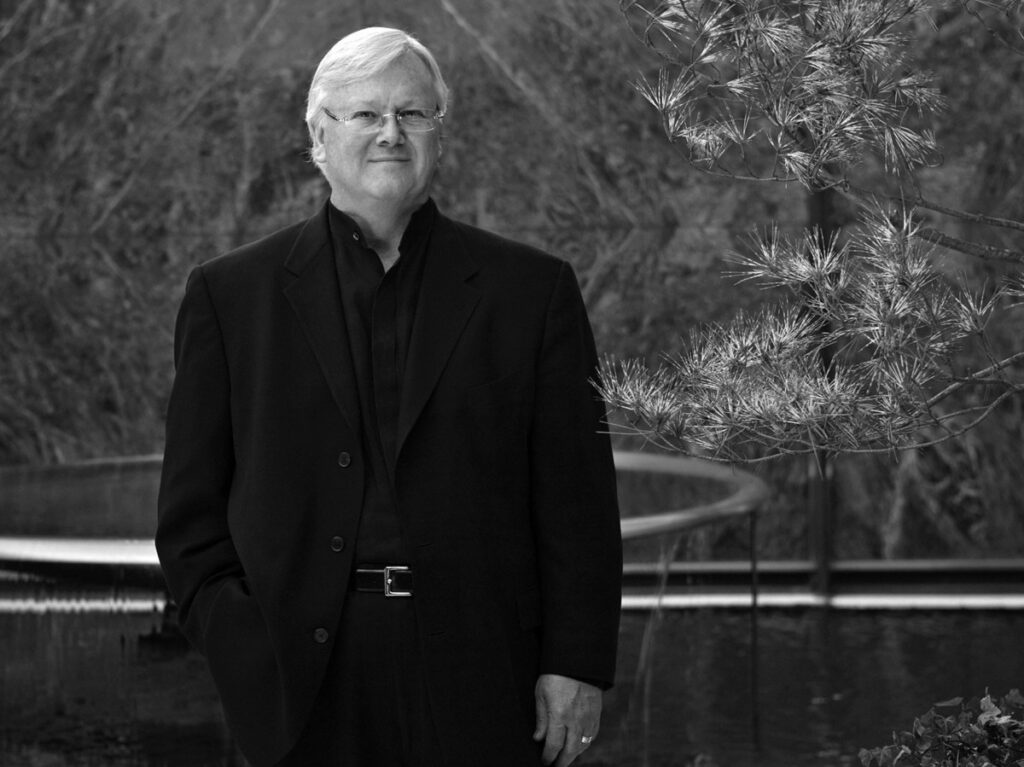
I began this essay with an anecdote about the Prada store in Beverly Hills and the tension that can result when credit for a building goes to a famous architect at the expense of his less-famous collaborators. I’ll end it with a version of that story turned inside out. About a year after starting at the Los Angeles Times, I received a rather terse e-mail from the office of Herzog & de Meuron, whose de Young Museum in San Francisco I had just reviewed (positively, for the most part, with some reservations). I was informed that the firm’s partners, Jacques Herzog and Pierre de Meuron, in town for a quick visit, wanted to meet me for what seemed a punitively early breakfast at their hotel. When I arrived, Herzog left de Meuron (who is nearly silent in public, playing Teller to Herzog’s Penn) and some younger staffers and joined me at a separate table. I had suggested in my review that de Young was perhaps a touch severe, lacking the playfulness and fluidity that I had detected in other recent projects by the firm, notably an addition to the Walker Art Center in Minneapolis. I attributed that playfulness and fluidity, in part, to “the growing influence [in the firm] of younger partners Harry Gugger and Christine Binswanger.”3
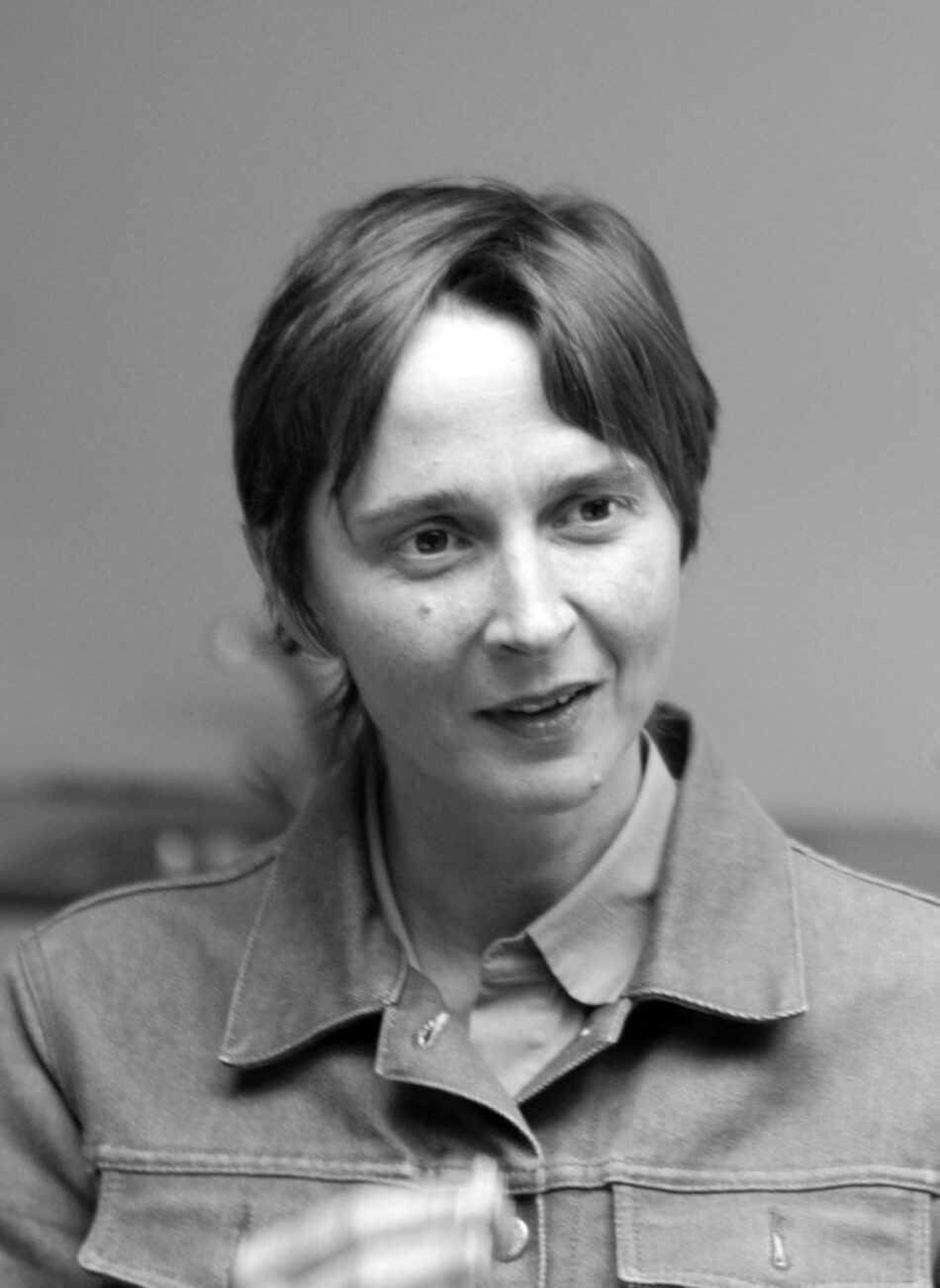
As I sipped a much-needed cappuccino on the patio, Herzog took exception to that idea. “If there is any new direction in the office,” he said, “it is driven by me and Pierre and by us alone!”. You know, in the spirit of a collaborative office.
At first, Herzog’s argument made me doubt my own assessment. Maybe I’d been too quick to single out Gugger and Binswanger. But even as I began to open my mouth to say just that, Herzog kept talking. And the more he protested, the more I began to feel that maybe I had been right all along. I finally told him that I didn’t think what I’d written needed adjusting. I also suggested, ever so politely, that maybe it wouldn’t hurt if he and de Meuron made a point, publicly or privately, of acknowledging the contributions of their younger partners.
